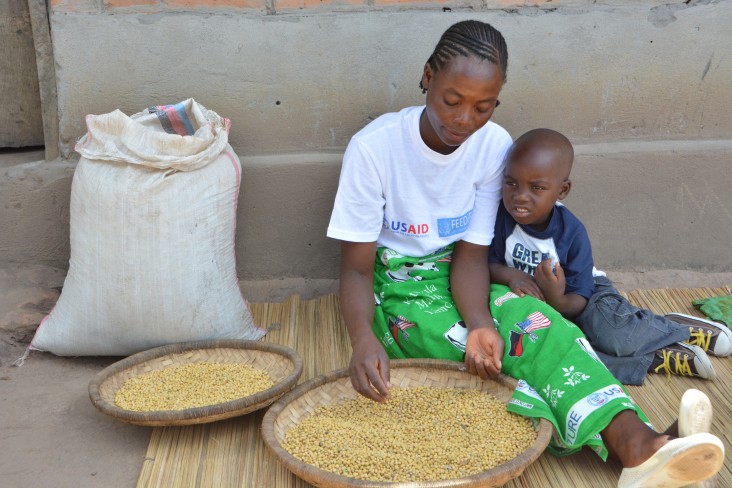
Malawi has one of the lowest GDPs in the world and 37.1% of Malawian children are stunted from malnutrition. USAID believes that by integrating nutrition in value chains (INVC), it can help Malawi’s small businesses develop more effectively while also promoting nutrition throughout the country.
Feed the Future, one of USAID’s flagship programs focused on fighting hunger, uses INVC to strengthen the competitiveness of the soy, groundnut, and orange-fleshed sweet potato value chains, improve the nutritional status of women and children, and build the capacity of Malawian agriculture and nutrition organizations. These agricultural activities promote the use of improved farming practices and technologies, including seed varieties which are drought tolerant, disease resistant, and early maturing; and climate smart agriculture that helps improve soil fertility, yields, and ultimately helps to increase household incomes, making farmers more resilient to external shocks.
IMPACT
INVC also assisted more than 82,000 groundnut farmers with access to certified seed and training in improved crop and land management, control of aflatoxin contamination, collective marketing, market access, and household processing and increased consumption of groundnuts. INVC helped unlock $4.8 million in agriculture financing through the Agricultural Commodity Exchange. This included bridging finance, a warehouse receipt system, and forward contracts. Moreover, INVC leveraged $0.2 million in private sector investment in agriculture, largely in storage infrastructure.In 2015,
INVC reached more than 237,000 rural households with agriculture and nutrition interventions. INVC promoted legume production, marketing, and household consumption, assisting some 94,137 smallholder farmers to plant soy, and helping connect them to growing domestic and regional markets for this high-demand commodity, while also teaching household processing of nutritious soy-based foods. Unlike most crops, which registered significant decreases in production due to flooding and prolonged dry spells during the 2014/15 season, soy registered a modest increase in production in the targeted districts over the previous year.
INVC has established 852 Care Groups that use community volunteers to deliver messages on infant and young child feeding, basic hygiene and sanitation, and maternal diet and health practices to about 122,251 households twice a month. To reinforce these messages, INVC also promotes community drama performances on issues such as dietary diversity, maternal nutrition, and exclusive breastfeeding, and develops and airs radio jingles and programs on these topics.
INVC also uses local farmers’ organizations and its network of volunteer Lead Farmers to spread the idea of “sell some, save some” of farmers’ soy and groundnut production, encouraging additional home consumption of both, which will result in improved nutrition.







Comment
Make a general inquiry or suggest an improvement.